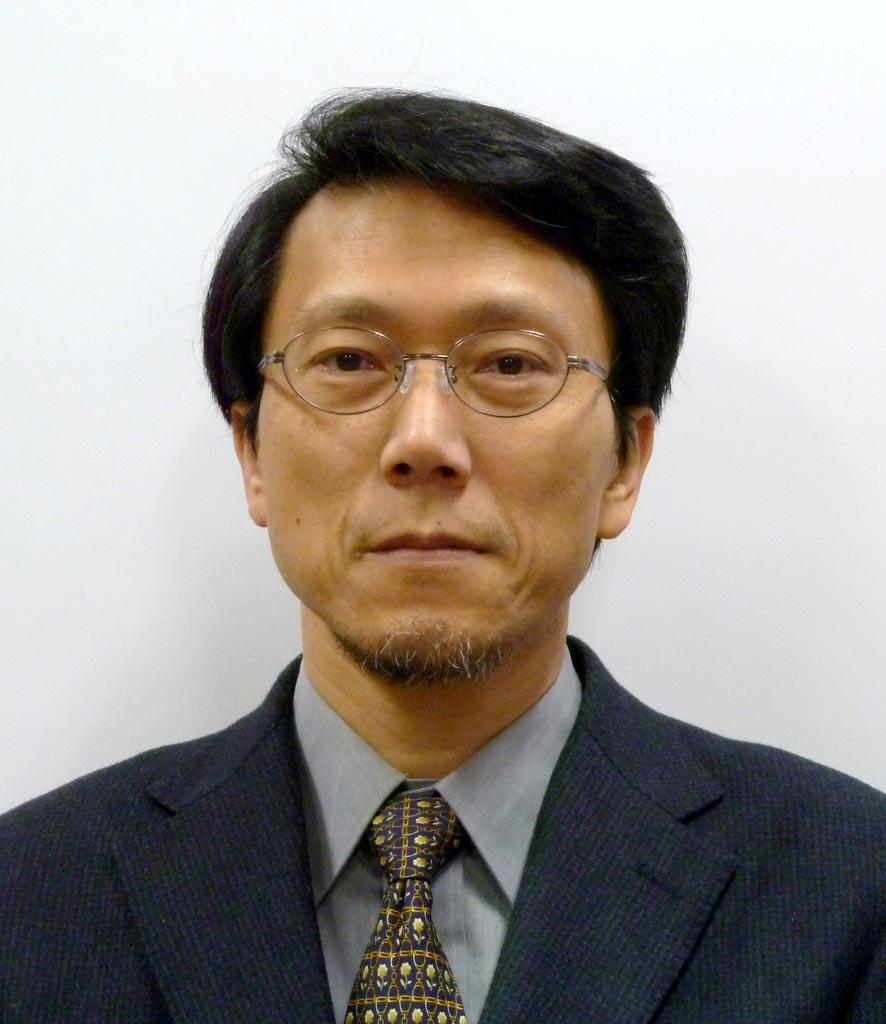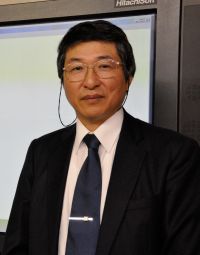






The University of Electro-Communications, Japan
 Dr. Yasushi Yamao received his B.S., M.S., and Ph.D. degrees in electronics engineering from Kyoto University, Kyoto, Japan, in 1977, 1979, and 1998, respectively. He started his research career of mobile communications from the measurement and analysis of urban radio propagation as his M.S. thesis. In 1979, he joined the Nippon Telegraph and Telephone Corporation (NTT) Laboratories, Japan, where his major activities included leading research on GMSK modulator /demodulator and GaAs RF ICs for digital mobile communications, and development of PDC digital cellular handheld phones. In 1993, he moved to NTT DoCoMo Inc. and directed standardization of high-speed paging system (FLEX-TD) and development of 3G radio network system. He also joined European IST research programs for IP-based 4th generation mobile communication.
Dr. Yasushi Yamao received his B.S., M.S., and Ph.D. degrees in electronics engineering from Kyoto University, Kyoto, Japan, in 1977, 1979, and 1998, respectively. He started his research career of mobile communications from the measurement and analysis of urban radio propagation as his M.S. thesis. In 1979, he joined the Nippon Telegraph and Telephone Corporation (NTT) Laboratories, Japan, where his major activities included leading research on GMSK modulator /demodulator and GaAs RF ICs for digital mobile communications, and development of PDC digital cellular handheld phones. In 1993, he moved to NTT DoCoMo Inc. and directed standardization of high-speed paging system (FLEX-TD) and development of 3G radio network system. He also joined European IST research programs for IP-based 4th generation mobile communication.
In 2005, he moved to the University of Electro-Communications as a professor of the Advanced Wireless Communication Research Center (AWCC). Now he is the director of the AWCC. His current interests focus on wireless ubiquitous communication networks and protocols, as well as high-efficiency and reconfigurable wireless circuit technologies both in RF and Digital Signal Processing. He is a Fellow of IEICE and member of IEEE and IPSJ. He served as Vice President of IEICE Communications Society (2003-2004), Chairman of the IEICE Technical Group on Radio Communication Systems (2006-2008) and Chief Editor of IEICE Communication Magazine (2008-2010). He is currently Vice Chairman of IEEE VTS Japan Chapter.
The University of Aizu, Japan
 Dr. Tuan D. Pham is Professor and Leader of Aizu Research Cluster for Medical Engineering and Informatics, Center for Advanced Information Science and Technology, The University of Aizu, Japan. He received his PhD in 1995 from the University of New South Wales, Sydney, Australia. His current research focuses on image analysis and pattern recognition applied to biology (high-content screening, intracellular space, and cellular dynamics) and medicine (computational neuroscience, cardiovascular and abdominal surgery). Prior to his appointment at the University of Aizu, he held a position as the Research Leader in Bioinformatics in the School of Information Technology and Engineering at the University of New South Wales, Canberra, Australia.
Dr. Tuan D. Pham is Professor and Leader of Aizu Research Cluster for Medical Engineering and Informatics, Center for Advanced Information Science and Technology, The University of Aizu, Japan. He received his PhD in 1995 from the University of New South Wales, Sydney, Australia. His current research focuses on image analysis and pattern recognition applied to biology (high-content screening, intracellular space, and cellular dynamics) and medicine (computational neuroscience, cardiovascular and abdominal surgery). Prior to his appointment at the University of Aizu, he held a position as the Research Leader in Bioinformatics in the School of Information Technology and Engineering at the University of New South Wales, Canberra, Australia.
Professor Pham has published 2 books and over 270 papers in SCI journals and peer-reviewed conferences. He has served several editorial roles, including Pattern Recognition (Member of Editorial Board), Journal of Computational Systems Biology (Member of Editorial Board), Current Bioinformatics (Section Editor), International Journal of Computer Aided Engineering and Technology (Regional Editor for South Asia), and Scientifica (Associate Editor of the section of Bioinformatics). His work on Biomedical Informatics has been presented in conference keynote and plenary talks, and resulted in invited visits and collaborations with top scientists in Medicine, Biology, and Computational Science in Asia, Australia, Europe and America.
Tokyo University of Agriculture and Technology
Due to the success of touch-sensitive smart phones and tablets, direct pointing and direct manipulation has finally become common. Moreover, users can write text, draw figures and annotate whatever they like with their fingers or pens on these devices. In this talk, I will present the belief that the ultimate merit of handwriting-based user interfaces is to support human-centered and creative work and describe the research and development that I have been conducting in these 30 years. I will talk how we invented so called “touch scroll” in 1990’s, why and how we made a large database of on-line handwritten patterns and report that our handwriting recognizer has been employed for NTT Docomo’s smart phones: Samsung's GALAXY, Sony tablets, NEC tablets and so on. Then, I present the latest architecture of handwriting recognition required from user interfaces and applications, but the details of pattern recognition algorithms will be omitted unless they are required. Finally, I will present an application, which is challenging to pattern recognition, human interface and artificial intelligence communities, i.e., automatic scoring of handwritten exams.
 He has been working on handwriting recognition, pen-based user interfaces and applications especially educational applications. Since 1980’s, he has been collaborating with many companies. Especially with Hitachi and Fujitsu, his laboratory made handwriting recognizers for real commercial use. He has been continuing handwriting recognition research to improve accuracy, performance and robustness, In 2011, he made a start-up named iLabo, which now sells the best handwriting recognizers for touch-based smart phones, tablets and so on. In 2012, iLabo was selected as one of the 100 most promising ventures in Japan by Nikkei Business. In 1990, he also proposed User Interfaces for tablet devices and showed several educational applications using various sizes of tablets. His U.S. patents to scroll the window in proportion to the pen speed, which is so-called “touch scroll”, were sold from his university to a company by a significant price. It was the highest amount among all the Japanese universities in the fiscal year 2010. He is now employing recent machine learning methods for handwriting recognition, user interfaces and IT education. He is also working on historical document processing to read excavated documents from the Heijo palace in Nara, Japan and to read Chu Nom documents in Vietnam. He is a fellow of IAPR (International Association of Pattern Recognition), IEICE (Institute of Electronics, Information and Communication Engineers, Japan) and IPSJ (Information Processing Society of Japan).
He has been working on handwriting recognition, pen-based user interfaces and applications especially educational applications. Since 1980’s, he has been collaborating with many companies. Especially with Hitachi and Fujitsu, his laboratory made handwriting recognizers for real commercial use. He has been continuing handwriting recognition research to improve accuracy, performance and robustness, In 2011, he made a start-up named iLabo, which now sells the best handwriting recognizers for touch-based smart phones, tablets and so on. In 2012, iLabo was selected as one of the 100 most promising ventures in Japan by Nikkei Business. In 1990, he also proposed User Interfaces for tablet devices and showed several educational applications using various sizes of tablets. His U.S. patents to scroll the window in proportion to the pen speed, which is so-called “touch scroll”, were sold from his university to a company by a significant price. It was the highest amount among all the Japanese universities in the fiscal year 2010. He is now employing recent machine learning methods for handwriting recognition, user interfaces and IT education. He is also working on historical document processing to read excavated documents from the Heijo palace in Nara, Japan and to read Chu Nom documents in Vietnam. He is a fellow of IAPR (International Association of Pattern Recognition), IEICE (Institute of Electronics, Information and Communication Engineers, Japan) and IPSJ (Information Processing Society of Japan).